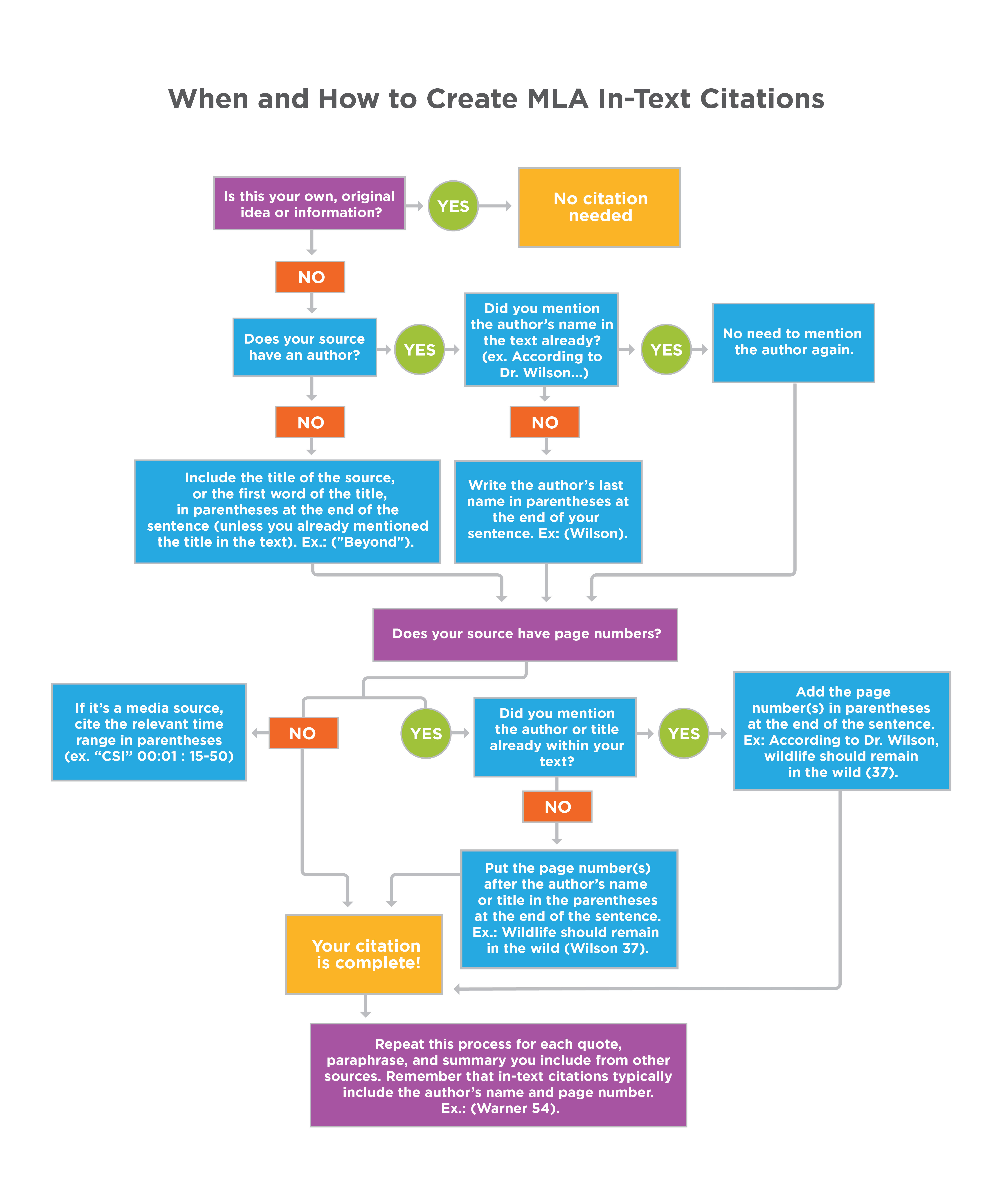In your paper, when you quote directly from a source in its words, or when you paraphrase someone else’s idea, you need to tell the reader what that source is so the author gets credit. When you tell the reader the author’s name in the text of your paper, this is called an in-text citation.
In-Text citations are placed in parentheses, and have two components
- The first word found in the full citation on the Works Cited page (usually the last name of the author)
- The location of the direct quote or paraphrase (usually a page number)
In-Text citations should be placed directly after the direct quote or paraphrase, or in a place that is a natural pause and does not cause the reader to become distracted while reading the body of your work.
Example:
When using the author’s name in the sentence, only include the page number in the parentheses.
Example:
Seuss’s use of words such as, “lurk” and “dank” help students understand the type of character that the Once-ler is (6).
When to Use a Block Quotation
A typical quotation is enclosed in double quotation marks and is part of a sentence within a paragraph of your paper. However, if you want to quote more than four lines of prose (or three lines of verse) from a source, you should format the excerpt as a block quotation, rather than as a regular quotation within the text of a paragraph. Most of the standard rules for quotations still apply, with the following exceptions: a block quotation will begin on its own line, it will not be enclosed in quotation marks, and its in-text citation will come after the ending punctuation, not before it.
For example, if you wanted to quote the entire first paragraph of Lewis Carroll’s Alice in Wonderland, you would begin that quotation on its own line and format it as follows:
Alice was beginning to get very tired of sitting by her sister on the bank, and of having nothing to do: once or twice
she had peeped into the book her sister was reading, but it had no pictures or conversations in it, ‘and what is the
use of a book,’ thought Alice, ‘without pictures or conversations?’ (Carroll 98)
The full reference for this source would then be included in your Works Cited section at the end of your paper.
Spacing and Alignment
The entire block quotation should be indented one inch from the left margin. The first line of the excerpt should not be further indented, unless you are quoting multiple paragraphs—in which case the first line of each quoted paragraph should be further indented 0.25 inches. As should the rest of your paper, a block quotation in MLA style should be double-spaced.
Candela Citations
- Revision and Adaptation of MLA: In-Text Citations and Parentheticals. Provided by: Lumen Learning. License: CC BY-SA: Attribution-ShareAlike
- MLA In-text citation graphic. Authored by: Kim Louie for Lumen Learning. License: CC BY: Attribution
- MLA: In-Text Citations and Parentheticals. Authored by: Catherine McCarthy. Provided by: Boundless. Located at: https://www.boundless.com/writing/textbooks/boundless-writing-textbook/writing-a-paper-in-mla-style-humanities-255/mla-citations-and-references-303/mla-the-works-cited-section-319-16905/. Project: Boundless Writing. License: CC BY-SA: Attribution-ShareAlike
- In-Text Citations in MLA 8th Edition. Authored by: EasyBib. Located at: http://www.easybib.com/guides/citation-guides/mla-8/in-text-citations/. License: CC BY-NC-SA: Attribution-NonCommercial-ShareAlike
- In Text Citations for Beginners (MLA). Provided by: BMS LMC. Located at: https://youtu.be/pCC6jLkyJmg. License: All Rights Reserved. License Terms: Standard YouTube License

